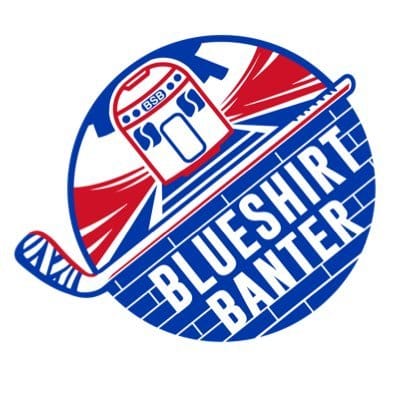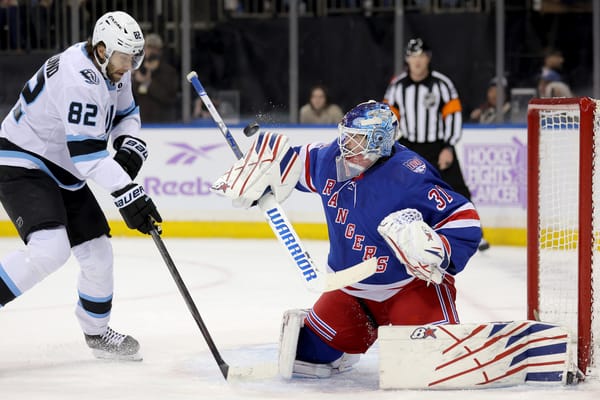Mika Zibanejad Has Answered The Rangers Questions
On July 18th, 2016, the New York Rangers traded center Derick Brassard to the Ottawa Senators for center Mika Zibanejad. At the time, the move was met with a bit of hesitancy and resistance from the fanbase; Brassard had established himself as a solid 2C behind Derek Stepan and had more than a few memorable playoff moments in his short Rangers career. Zibanejad was a relative unknown in Ottawa; drafted 6th overall in 2011, Zibanejad hadn’t found a strong role for himself with the Senators even though he had put up a solid 51 point season the season before the trade.
The reasoning for this move was the ever present salary cap; Zibanejad wasn’t just younger than Brassard (Mika was 23 at the time, as opposed to Brassard being 29 years old), he was also cheaper and more cost controlled.
ZBad’s first season on Broadway got off to a great start, through his first 19 games as a Ranger, Zibanejad put up a solid 10 points at even strength (5-5-10) to go along with a 52.77 CF%, 55.43 FF%, and a 56.30 SCF%. The young Swedish-Iranian forward put up these numbers while centering a line of Chris Kreider and rookie winger Pavel Buchnevich, the early success of the line led to fans dubbing it the “KZB Line”. Unfortunately, this success came to a sudden halt for Mika after he suffered a nasty broken leg when he crashed into the end boards in a late November game against the Florida Panthers.
The injury sidelined Zibanejad until mid January and it was clear through the rest of the season that he never really fully came back from the injury. His possession numbers fell under 50% through the rest of the season (47.47 CF%, 48.49 FF%, and 49.33 SCF%) and he only put up 12 even strength points (3-9-12) the rest of the way.
After a second round playoff loss to the Senators, it was clear going into the offseason that changes were coming to the Rangers. One of the big moves the Rangers made this offseason was trading their top center Derek Stepan along with backup goalie Antti Raanta to Arizona for the 7th overall pick in the 2017 Draft and defenseman Tony DeAngelo. This move opened up the 1C hole for the Rangers and, after buying out defenseman Dan Girardi and signing Kevin Shattenkirk, the Rangers made a bet with Mika Zibanejad by agreeing to a 5 year, $26 million contract in late July. After trading two top line centers in consecutive offseasons, the Rangers were taking a pretty sizeable risk in assuming that their young, talented centers would be able to fill the voids left by the absence of Stepan and Brassard.
Early this season, Zibanejad has answered all questions the Rangers (and their fans) may have had. Averaging just under 19 minutes a night, ZBad has been cranking out solid possession numbers at even strength (54.29 CF%, 53.72 FF%, 51.44 SCF%) while seeing a bit more defensive zone starts compared to last season (51.3% offensive zone starts in 2017, 53.8% last season). These flashy numbers were generated early this season as head coach Alain Vigneault reunited the KZB line (we’ll ignore the asinine decision made in late October to disband it for now) and has allowed the trio to flourish. Zibanejad’s contributions have not only come 5-on-5, but have greatly improved the power play as well.
As a right handed shot, Zibanejad has been a staple in and around the left faceoff circle, known as the Ovi Spot, where he can use his lethal shot and high powered hockey IQ to quickly read a situation and make the right play. Mika’s shot has been something that the Rangers have been sorely missing on the power play for years and it’s a marvel watching him now as it’s clear he worked hard in the offseason on his accuracy and timing.
It’s not just Zibanejad’s shot that makes him so valuable to the Rangers and lethal to other teams. It’s his ability to not only play fast but think fast at the same time. Instead of trying to slow a play down, Mika is able to make plays on the fly to find open teammates, often in stride catching defenders flat footed and out manned.
Finally, that lethal shot of his and his vision also work well with the fact that Zibanejad is so silky smooth and is able to stick handle and feather passes cross-ice even when in close to the goal.
Chris Kreider has been turning it on as of late, and Pavel Buchnevich has been great all season and is finally reunited with his proper line mates, but between them lies Mika Zibanejad, arguably the member of the trio with most to prove to New York and so far, he’s answered every question asked of him.
(All numbers courtesy of naturalstattrick.com and Hockey-Reference.com)




